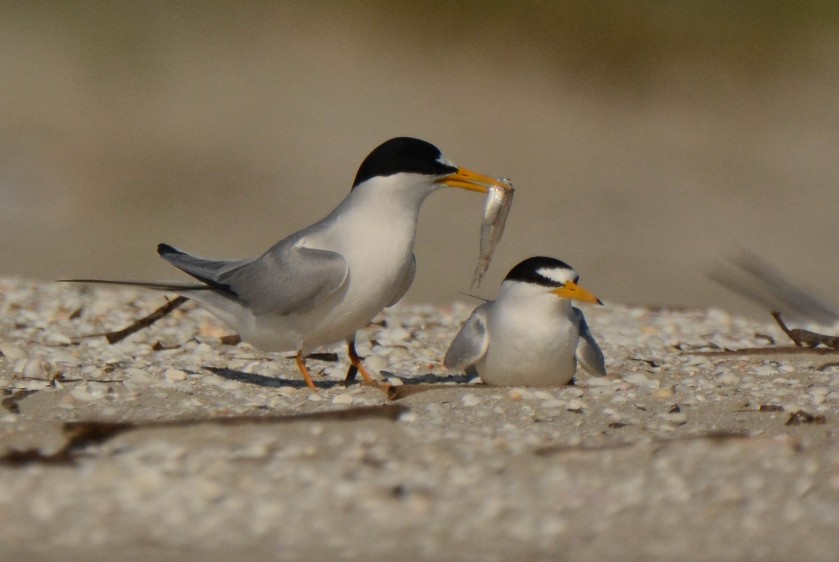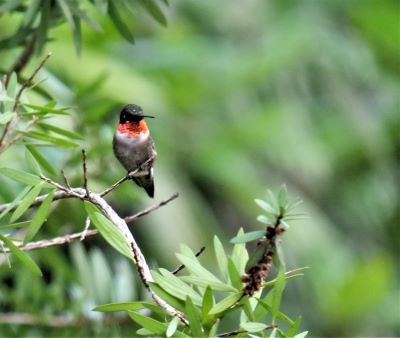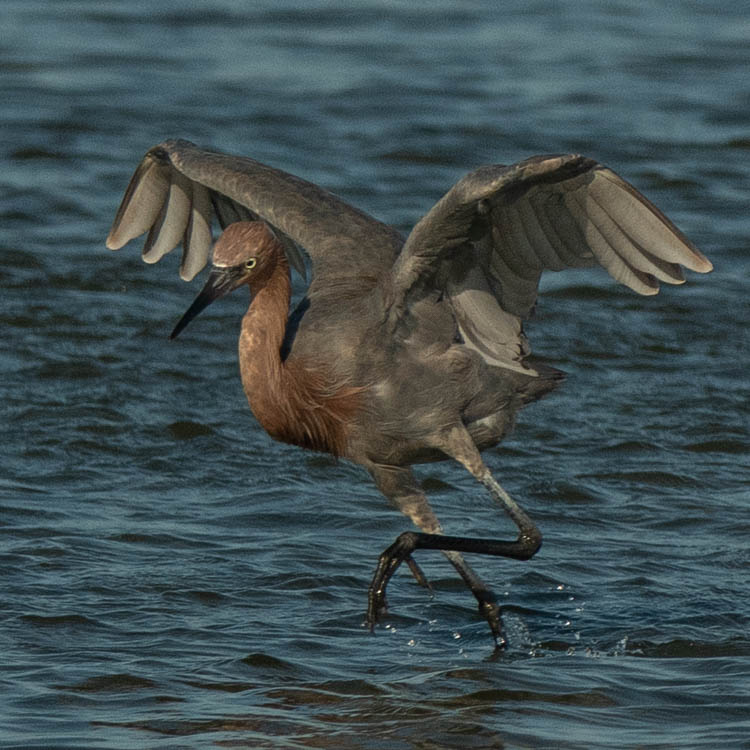Happy Summer! Like us, many birds avoid the summer sun by limiting daytime activity. These birds will forage in the early morning, evening or throughout the night so they can conserve energy and rest during the warmest times of day. You can plan your birding activities to coincide with the birds schedules. SIB’s “Sit, Sip and See” activities scheduled for June, July and August are just one way to do that.
But even in the warm south, there are birds that are most often seen in summer. Let’s look at some of my favorites!

Nothing says “summer” quite like a Summer Tanager. They begin arriving in mid-April and remain in our area until fall. The adult males are a bright red while the females are usually a pale dull yellow to brighter orange. Immature males are dull yellow-olive with blotchy patches of red. The male Summer Tanagers do not have the black wings seen on the less frequently seen, Scarlett Tanagers. Summer Tanagers are seen at Palmetto Lake, Crooked Oaks Golf Course and Caw-Caw Interpretive center to name just a few places.

Eastern Kingbirds also arrive in the Charleston area in mid-April and remain all summer. This flycatcher can be seen perched atop a limb. It is easily distinguished by the white band at the base of it’s tail. On Seabrook Island, they are regularly seen on both golf courses and at Palmetto Lake.

Least Terns are an endangered species that nests directly on the sand. They are one of the protected species that use the “bird sanctuary” on North Beach. Their mating ritual where the hopeful male presents the female with a fish is a joy to watch. When beach goers get too close to a nesting pair, they will dive-bomb the walkers to warn them away from the nests so please be careful when on North Beach to not cause them undue stress.


Mississippi Kite and Swallow-tail Kite are both beautiful raptors usually seen soaring overhead. Both are able to capture their insect prey on the wing. Both species are frequently seen at Caw-caw Interpretive Center. Mississippi Kites are seen around Seabrook at either golf course or Palmetto Lake.

Ruby-throated Hummingbirds are in our area year-around but more common in summer. It is thought that the birds that are here in summer likely spend their winters down towards Panama while our winter Ruby-throated Hummingbirds likely go north for the summer. These birds are seen not only at nectar feeders but enjoying our trees and colorful flowers.


Chuck-will’s-widow and Common Nighthawk are two summer birds that mean “summer nights” to me, similar to the fireflies of my youth. Both can be seen during the day but are most frequently sighted at night. Common Nighthawks soar low over the dunes and areas close to the beach, especially just after dusk. Chuck-will’s-widow are usually heard rather than seen as their nighttime whistle sounds their name (often just outside my window). Chuck-will’s-widow nests have been seen in multiple locations on Seabrook Island, as pictured above.

Reddish Egrets are uncommonly seen on North Beach. An entertaining heron to watch—known for sprinting, jumping, and spinning around in shallow water with its wings held up. Found exclusively near the coast, especially on mudflats. They are later summer arrivals not usually seen until late June or July
Hope you enjoy some summer birding. There are also many birds you see year-around. Look soon for a few of my favorites.
Submitted by: Judy Morr
Photos: Summer Tanager: Susan Markum
Ruby-throated Hummingbird: Jennifer Jerome
Eastern Kingbird, Least Tern, Swallow-tailed Kite, Mississippi Kite, Reddish Egret: Ed Konrad
Chuck-will’s Widow: Gina Sanders



